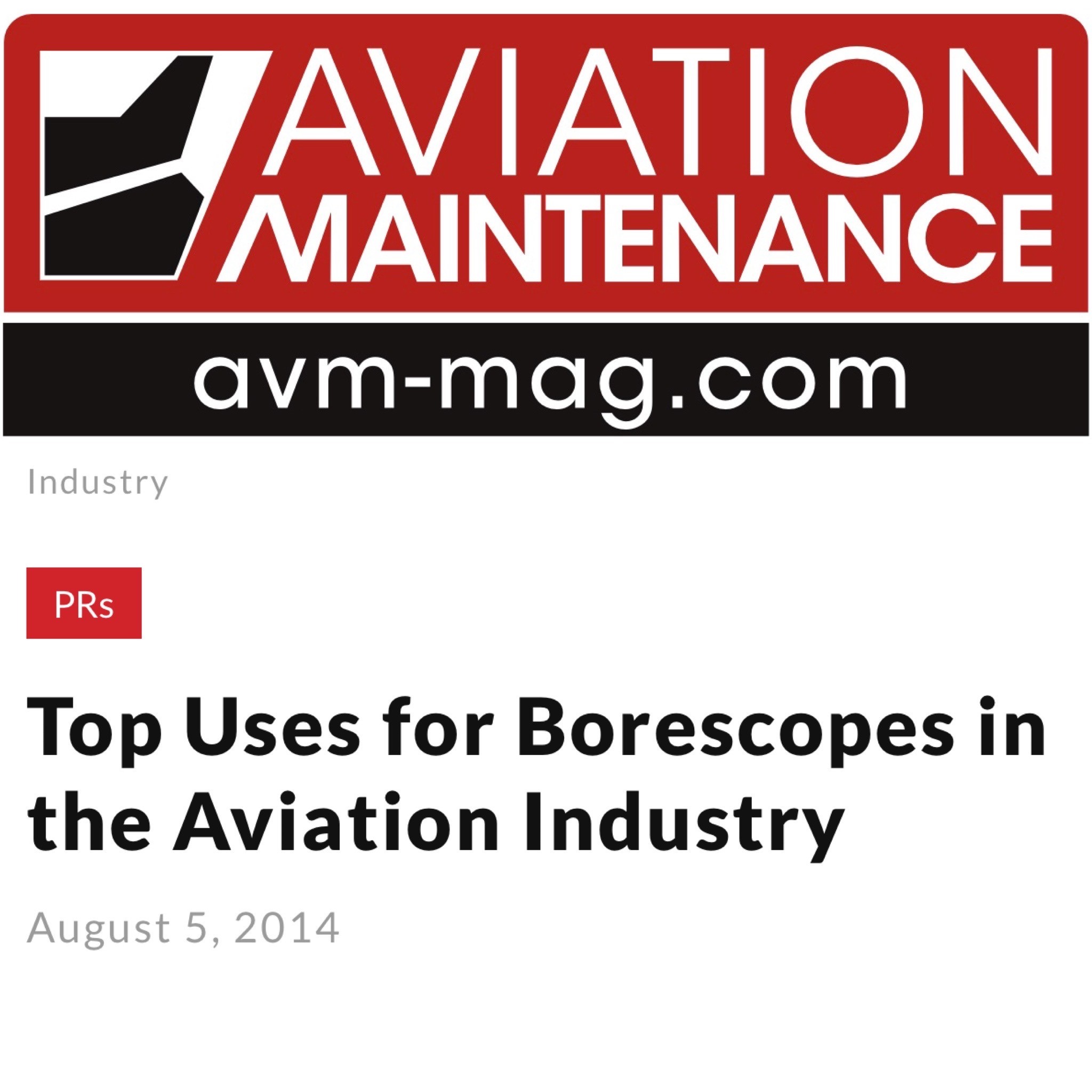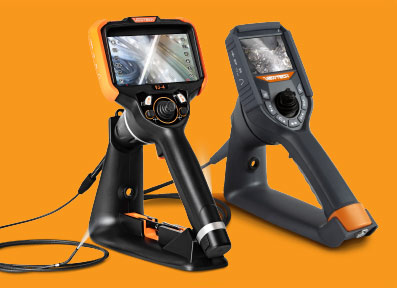Articles Written for Industry Publications

AVIATION MAINTENANCE MAGAZINE
Top Uses for Borescopes in the Aviation Industry
Borescopes are used in all facets of the aviation industry
by ViewTech Borescopes | RF System Lab
With our extensive video borescope knowledge, ViewTech | RF System Lab discussed the top uses for borescopes in the aviation industry with Aviation Maintenance Magazine.
To read the full article on Aviation Maintenance Magazines website, please go here, view the PDF version here or read the text version below…
August 5, 2014
ViewTech Borescopes | RF System Lab
If you are an IA or AP technician in the aviation industry, a good-performing, high-quality borescope is essential to your job. Whether your specialty is turbines, recips, airframes or avionics, you need a quality borescope in your toolkit that you can rely on.
Borescopes are used in all facets of the aviation industry, from helicopters to military fighter jets. There’s a reason for that: borescopes are able to inspect confined areas where you cannot easily see to ensure safe and reliable operation of aircraft parts including turbines, airframes, winglets, landing gear, and other confined space areas.
One of the essential uses of articulating borescopes is for turbine engine inspection. Turbine engines have many internal rotating sections, as well as combustion chambers, that can be inspected with an articulating video borescope. Borescopes, which can enter directly through an injector nozzle or access port and require no engine disassembly, are able to internally inspect these blades for corrosion, wear, or imperfections such as cracks, which can occur if the compressor section gets too hot. Utilizing a borescope to inspect and maintain any type of engine helps to ensure that the aircraft is airworthy.
Turbine engines in helicopters, or rotorcrafts, are located near the main rotor blades, so in order to perform any sort of maintenance on them, professionals usually have to climb up scaffolding or a ladder; this is where the features of articulating borescopes, such as RF System Lab’s VJ-Advance (VJ-ADV) video borescope, are extremely beneficial. The VJ-ADV’s compact, portable design and on demand power (the VJ-ADV video borescope simply requires AA batteries – no need to wait for it to charge or make sure there is an electrical outlet nearby), helicopter turbine inspections are completed with ease. In addition, the super-slim 2.8mm VJ-ADV video borescope is a great fit for Main Rotor Gearbox (MRGB) inspections. The thin diameter insertion tube easily allows technicians to check for cracks developed in the welding area between the shaft and bevel gear, ensuring that the MRGB is in working order and no leaks will occur.
In addition to turbine inspections, borescopes have many other aviation-related uses. As quoted by RF System Lab’s General Manager, Sean O’Connor: “Applications include inspecting airframes, flap tracks, wiring harnesses, and landing gear.” Additionally, borescopes are used in corrosion inspections.” In fact, a borescope can be used on just about any piece of aviation equipment. Borescopes range in size, for instance: the VJ-ADV comes in 2.8mm, 3.9mm and 6.9mm diameters, so finding a size to fit an access port is easily managed.
However, just because a borescope is able to inspect many different parts of an aircraft does not mean that some areas should not be approached with caution. “Special care should be taken when using a borescope to inspect fuel tanks, with proper grounding being very important,” notes O’Connor. “Aside from fuel tanks, as long as the scope is liquid proof and resistant to the common fluids found in various aircraft systems, a borescope can safely be used anywhere.” Borescope technicians that are approved to sign off on annual inspections certifying airworthiness will have the proper Inspector Authorization (IA) Certification; but making sure to be properly educated on safety precautions when doing any kind of inspection is extremely important.
Another important reason borescopes are crucial to aircraft inspections: they allow maintenance professionals to complete 100-hour FAA inspections, necessary for a majority of aircrafts, with confidence. 100-hour inspections require photographic evidence of internal aircraft structures, which are easily captured by an articulating video borescope such as the VJ-ADV. Without a high-quality borescope to provide documentation, Maintenance professionals could put their license and reputation on the line.
Remote Visual Inspection (RVI) anywhere within an aircraft maintenance facility, or on a flight line, is not a problem with the VJ-Advance video borescope because it is battery powered, completely portable, and lightweight. For more information on the impressive VJ-Advance line of joystick controlled, fully articulating video borescopes, or to find out how you can demo the VJ-Advance video borescope for free at your own facility, visit the RF System Lab website or call (888) 747-6526 to speak to a borescope expert regarding your exact inspection needs.
Request a Free Demo Unit
Check the box in the form below and one of our representatives will arrange a free demo unit.
Call Us at 231-943-1171
– Or –
Fill out the form below and one of our representatives will contact you.










